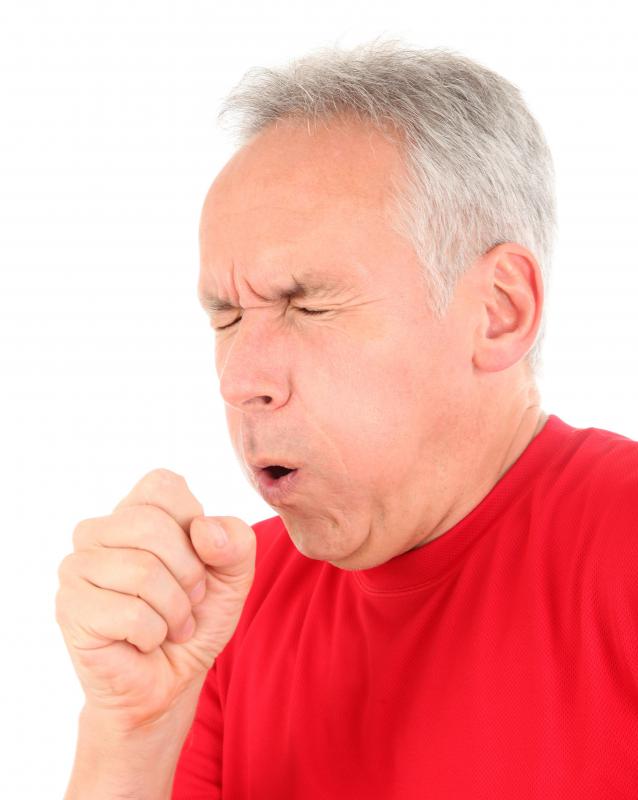At WiseGEEK, we're committed to delivering accurate, trustworthy information. Our expert-authored content is rigorously fact-checked and sourced from credible authorities. Discover how we uphold the highest standards in providing you with reliable knowledge.
What are the Different Kinds of Whooping Cough Treatments?
Whooping cough, also known as pertussis, is a contagious infection of the respiratory tract. The condition causes uncontrollable coughing spells which generally produce whooping sounds when the person takes a breath after the spell. Whooping cough treatments will generally include antibiotics and typically, the earlier antibiotics are begun, the better. Babies and really young children may be treated by being admitted to the hospital. Breathing treatments and intravenous fluids may also be used as whooping cough treatments while in a hospital setting.
In general, whooping cough is caused by a bacteria. The bacteria is usually identified as Bordetella pertussis. When a person with whooping cough coughs, he or she may expel contaminated droplets, which can easily be inhaled by a nearby person. This is typically how the infection spreads. Whooping cough can affect anyone, however, it is most typically seen in babies and small children.

Although a chronic and persistent cough is generally the main symptom of whooping cough, it may not be the first symptom to develop. In fact, when a person is first infected by the bacteria, he or she may seem to have the same symptoms one would have with the common cold. For instance, early whooping cough symptoms may include a sporadic dry cough, sneezing, fever and a runny nose. It is frequently after the first week or so of being infected that the coughing spells start.

Whooping cough treatments will generally center around antibiotics. The earlier antibiotics are given to a person with whooping cough, the quicker the infection may be cured. In addition, early antibiotic treatment may also reduce the spreading of this respiratory infection. Often, individuals with whooping cough will take antibiotics for several weeks. This is generally because the infection can last for several weeks.

Even though coughing is the main symptom of this respiratory infection, it is important to note that cough medicines are not included in whooping cough remedies. They seem to do little to alleviate the intense coughing spells. For this reason, physicians generally dissuade patients from using such medicines.
Whooping cough treatments can also include inpatient hospitalization. In fact, whooping cough in babies is commonly treated in this manner. This may be done to lower the chances of serious whooping cough complications such as pneumonia. If breathing has been affected by the repeated coughing spells, hospitalization may also allow close supervision of breathing and the opportunity to provide breathing treatments if needed. In addition, if a person is at risk of becoming dehydrated because he or she is unable to drink enough due coughing, intravenous fluids may also be part of hospitalized treatment.

It may be difficult to sleep with whooping cough. For this reason, whooping cough treatments will sometimes include sedatives. Typically, sedatives will be incorporated into a treatment plan to help a person with whooping cough sleep. Doctors will generally be very informative about how to take the sedatives. For the well-being of the patient, it will be important to use the medicines directly as the doctor prescribes them.
AS FEATURED ON:
AS FEATURED ON:















Discuss this Article
Post your comments